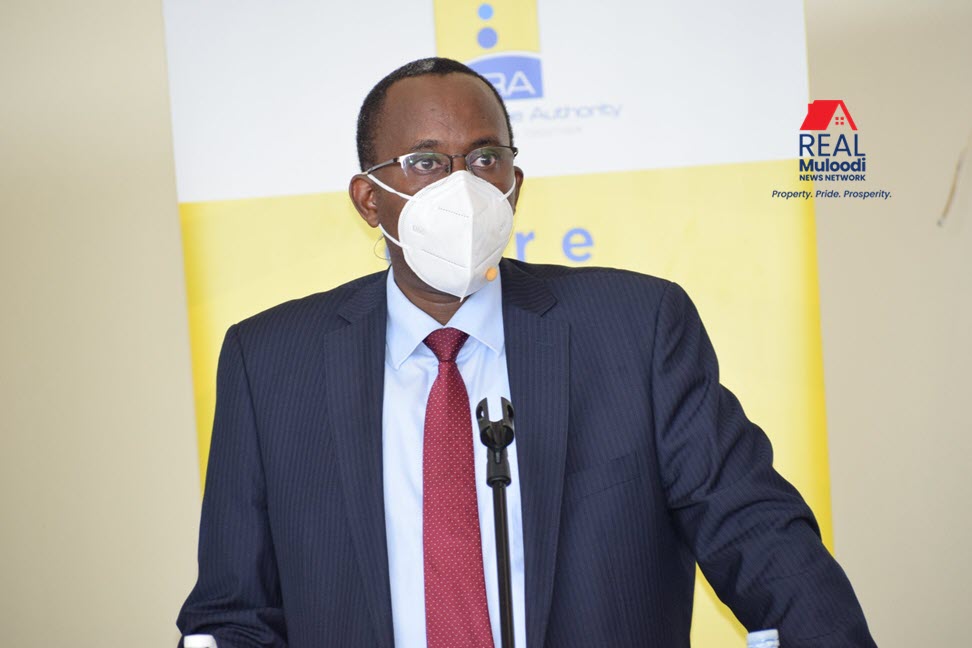UGANDA, Kampala | Real Muloodi News | The Ministry of Finance has set an ambitious collections target for the Uganda Revenue Authority (URA) for the coming financial year. The Authority will have to have to bring in revenues amounting to USh25.5Tn in FY2022/23, an increment of USh3Tn.
Of this, USh23.755Tn is projected to be raised from tax revenue, with USh1.761Tn from Non Tax revenue sources.
Henry Musasizi, the State Minister of Finance, made this revelation while tabling the National Budget Framework Paper for 2022/23.
The ambitious collections target comes at a time when URA is grappling with revenue shortfalls, largely because of COVID-19.
In the FY2021/22, URA registered a shortfall of about USh2.3Tn, having collected USh19.2Tn out of the target USh21.6Tn.
“This target was approved by Parliament before the impact of COVID-19 set in, and macroeconomic variables that affect revenue like GDP growth were projected at 6 per cent, yet by the end of the financial year the GDP growth was at 3 per cent,” explained John Rujoki Musinguzi, URA Commissioner General to reporters on July 15.
Even though the collections target was not reached, URA managed to post 14.9 per cent revenue growth, the highest in the last four financial years, said Musinguzi.
In the first quarter of this current financial year, URA registered another shortfall of USh499.4Bn, after collecting USh4.45Tn revenues out of its target of USh4.95Tn.
In the second quarter which ended this December, URA is targeted to collect USh6.1Tn.
It is crucial that URA meets their revenue collections target to contribute to funding the national budget and slow the ever-escalating public debt crisis. According to the 2020 Auditor General’s report, public debt shot to a very concerning Shs65Tn, up from Shs49Tn in 2019.
Tax to GDP Ratio
President Museveni, while officiating URA’s 30th anniversary on September 15, chastised the Authority for failing to increase the Tax to GDP ratio, which has stagnated between 12 per cent and 13 per cent in the last 20 years.
Musinguzi believes that the Tax to GDP ratio can be increased if all Ugandans willingly join the tax register and start paying their tax obligations. Currently, the tax register has 1.8 million tax payers out of a population of around 48 million people, meaning the few are carrying the weight of Uganda’s entire tax burden.
URA anticipates of raising the number of registered taxpayers to 2.1 million by the end of this financial year.
“We would like to increase our Tax GDP Ratio from the current 13 per cent to at least 20 per cent, we would like every citizen to honor their civic obligation of tax compliance and treat it as a noble duty,” he said.
Finance Minister, Matia Kasaija, has also appealed to the public to start paying their fair share of taxes. He too says he is not happy with the current 13 per cent tax to GDP, but also not happy with borrowing.
“I am not proud to be a borrower and these days in Parliament and Cabinet, they call me Minister of Borrowing – it’s not interesting because every week or two I am forced to go to Cabinet or Parliament to seek permission to borrow,” he said.
“The president under marked me and said ‘Kasaija, you are praising 13 per cent yet your tax GDP is ratio that’s not impressive. 13 per cent is too little for our tax strategy; we want it to go to 20 per cent. The lower that tax to GDP rate is, the less you will have a balanced budget because the revenue coming from taxes are not sufficient to help you to finance all the budget therefore I have to borrow to finance those projects’,” he added.
How URA Plans to Meet Its Increased Target
URA has launched numerous revenue mobilisation strategies, with the goal to finance Uganda’s budget and save it from devastating external loans. Among these include;
- Rental Tax Compliance System (rTCS): In an effort to enhance tax compliance among rental property owners, URA has implemented rTCS; a software application used to determine the highest priority individuals or corporations likely to be underpaying their rental income tax obligations. A pilot of the system was deployed in December 2021, and investigations into non-compliant landlords are currently underway.
- Electronic Fiscal Receipting and Invoicing System (EFRIS): URA has developed the EFRIS electronic invoicing and e-receipt solution for VAT declaration in commercial transactions. Once a transaction is initiated, the details are transmitted to the URA in real time to generate electronic receipts and electronic invoices. Transactional data or copies are digitally stored in the system, thereby eliminating the risk of losing paper documents. EFRIS came into force in Uganda on July 1, 2020. Its use became mandatory in 2021, and taxpayers who do not adapt to the system will be penalised. EFRIS has contributed to the 14.7 per cent growth in VAT collections.
- Digital Tax Stamps (DTS): Tamper-proof physical paper or numerical markings, known as Digital tax stamps, are applied to goods or their packaging with security features and codes to prevent counterfeiting. It also helps in tracking and tracing goods. URA introduced the digital tax stamp to combat illicit trade, seal revenue leakages, boost collection and increase efficiency in managing taxpayer compliance. DTS contributed to 16.8 per cent growth in Excise Duty in FY2020/21.
- Alternative Dispute Resolution (ADR): A tax dispute arises where there is disagreement between the tax payer and URA on the tax payable. Traditionally, the courts of law have been the most commonly used approach to dispute resolution. With ADR, other methods are employed to resolve the dispute before it reaches legal action, to include conciliation, mediation, arbitration, and neutral evaluation.
READ MORE LIKE THIS:
URA Deploys Rental Tax Compliance System, Investigations into Non-Compliant Taxpayers Underway
Finance Ministry Presents Projected Budget of USh43 trillion for FY 2022/2023
URA Pledges to Settle Tax Disputes Peacefully, Instead of Dragging Taxpayers to Court



